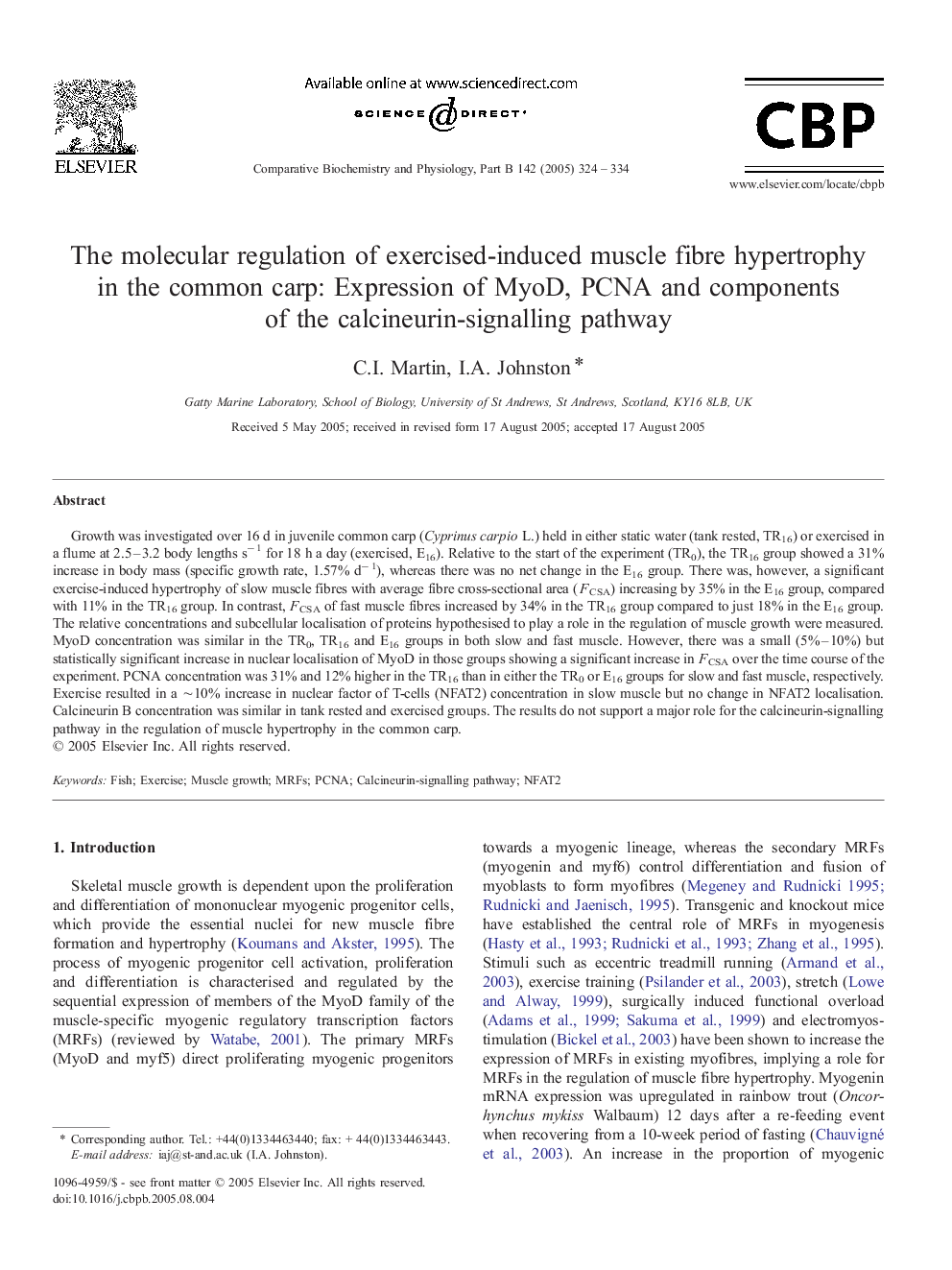| Article ID | Journal | Published Year | Pages | File Type |
|---|---|---|---|---|
| 10820555 | Comparative Biochemistry and Physiology Part B: Biochemistry and Molecular Biology | 2005 | 11 Pages |
Abstract
Growth was investigated over 16 d in juvenile common carp (Cyprinus carpio L.) held in either static water (tank rested, TR16) or exercised in a flume at 2.5-3.2 body lengths sâ 1 for 18 h a day (exercised, E16). Relative to the start of the experiment (TR0), the TR16 group showed a 31% increase in body mass (specific growth rate, 1.57% dâ 1), whereas there was no net change in the E16 group. There was, however, a significant exercise-induced hypertrophy of slow muscle fibres with average fibre cross-sectional area (FCSA) increasing by 35% in the E16 group, compared with 11% in the TR16 group. In contrast, FCSA of fast muscle fibres increased by 34% in the TR16 group compared to just 18% in the E16 group. The relative concentrations and subcellular localisation of proteins hypothesised to play a role in the regulation of muscle growth were measured. MyoD concentration was similar in the TR0, TR16 and E16 groups in both slow and fast muscle. However, there was a small (5%-10%) but statistically significant increase in nuclear localisation of MyoD in those groups showing a significant increase in FCSA over the time course of the experiment. PCNA concentration was 31% and 12% higher in the TR16 than in either the TR0 or E16 groups for slow and fast muscle, respectively. Exercise resulted in a â¼10% increase in nuclear factor of T-cells (NFAT2) concentration in slow muscle but no change in NFAT2 localisation. Calcineurin B concentration was similar in tank rested and exercised groups. The results do not support a major role for the calcineurin-signalling pathway in the regulation of muscle hypertrophy in the common carp.
Related Topics
Life Sciences
Biochemistry, Genetics and Molecular Biology
Biochemistry
Authors
C.I. Martin, I.A. Johnston,
